Photographs: Courtesy Careers360 Jaganathan Krishnan, Careers360
FAST FACTS
Programme: PG Diploma/Diploma in Cinematography
Institutes: FTII, SRFTI, Whistling Woods, Roop Kala Kendro
Course duration: 3-4 years (for PG), 2 year (for Diploma)
Eligibility: Graduation in any discipline
Skills and aptitude: An aptitude for photography, painting, creativity
In its infancy, filmmaking was pretty much a one-person job.
The Director of Photography (DP) was also the director of the film, before the roles split up.
Being a Director of Photography or cinematographer is now a highly specialised activity.
Good DPs are an asset to a film and are chased by directors and producers alike, as they are the guys who make it all look good.
Though, more art than technique, there is much technique to be picked up, and a lot of learning has to be done to become a cinematographer.
And that is where a good course at a film institute comes in handy.
Learning the craft
"While no course can make you good cinematographer, a good teacher can guide you to explore your curiosity towards the medium," says Dani Raymond, an independent DP who passed out of the Satyajit Ray Film & Television Institute (SRFTI) in Kolkata.
For a specialised course in cinematography, one has to join a film institute. In India, it is usually a two to three year diploma.
The Film & Television Institute in Pune and the Satyajit Ray Film & Television Institute in Kolkata are one of the better known ones, where one joins a PG Diploma postgraduation, where as at an institute like Whistling Woods, you can pursue a two-year course after Class 12.
Please click NEXT to continue reading...
What you learn at the institute
Image: Cinematographer Varughese during an outdoor shootPhotographs: Courtesy Careers360
USP of film institutes
Training is a mix of theory and practice and one learns to be a DP by actually being one.
"What sets apart a film institute from other places of learning are the projects you get to do independently. So, you actually learn to become a cinematographer by being a cinematographer. You learn by doing," says Yuvraj Dheer, alumnus of Satyajit Ray Film and Television Institute.
"At the institute we handle 16 mm cameras from the first year onwards. Second year on, we were doing 35 mm shoots.
Finally you get to do a 30-minute diploma film. No where else do you get this kind of latitude to do your own thing.
You learn by experimenting with cameras, lights and film stock. A fun-do experience!" he adds.
Curriculum structure
The first year is a common foundation course.
You are taught direction, editing, sound, production, camera, art design, and get a basic grounding in all disciplines of cinema.
A typical day for a first year student starts off with theory classes in the first half of the day. The second half is devoted to practicals in all disciplines.
The evening ends with a film screening. Students are exposed to all kinds of cinema from all over the world. That by itself is a very enriching experience.
From the second year on, the focus is more on practice and you end up spending more and more time in the studios.
Students are allotted studio time and work with fellow students. If one student is the DP in a practice shoot, his batchmates or juniors would assist.
By the end of the final year, students would have made around six films covering the entire gamut, from short film, a music video and documentary, to final half-hour diploma film. By the time a student graduates, he would have shot several short films.
A graduate is equipped to be a full-fledged Director of Photography. However, getting there is a matter of perseverance.
Creativity, expression and team spirit matters
Image: Cinematographer Ravi Chandran shooting with Sanjay Leela Bhansali for BlackNature of training
Students do their projects together in crews of four where a director teams up with a DP, an editor and a sound recordist.
One learns how to work together as a team.
"When you work together as a team and use people's minds as resources, you know the sum being greater than the number if its parts. When you value the minds of the people you work with, interesting work happens," shares inematographer Sanu Joseph Varghese.
Develop a point of view
The biggest thing is the independence of expression that is nurtured in film institutes.
Your teachers might disagree with you and your expression, but as a student you are respected as an individual artist and allowed to pursue what you feel is right.
"This goes a long way in figuring out what your approach towards the medium is," says Dani Raymond.
'Observe light and life, closely'
Image: Sanu Varughese instructs his crew during an outdoor shootPhotographs: Courtesy Careers360
As I enter the set, cinematographer Sanu John Varughese is instructing the key grip (the guy who pushes the camera trolley), who was getting his timing wrong. Every time he pushes the trolley, it moves too fast or too slow.
Sanu tells him to sing 'jhalakdikhlajaain' in his head, then do his movement.
The guy gets it right away, they do a thumbs-up and the grip moves away.
Sanu, one of the more accomplished DPs around, talks about the joys and stresses of his profession.
The joys of cinematography...
This month I worked for eight days, earned more than enough money for the rest of the month! (laughs).
The real joy is that you get observant, sensitive to things around you - light, life, nature. It expands you. You go through life seeing more, feeling more.
What was your experience in your last film Vishwaroopam?
Wonderful! As a director Kamal Haasan plays very interestingly with space. He takes three-four spaces and creates his own geography.
For a cinematographer, that is very exciting. He's also one of the most interesting raconteurs. He would constantly regale us with interesting stories that had us in splits.
How did you enter the profession?
I did my BFA Applied Arts from Trivandrum College of Art. I have a trained visual eye and developed an interst in photography.
Then I joined the Sarojini Naidu School of Arts and Communication at University of Hyderabad. I had a wonderful set of teachers and got a well-grounded theoretical understanding of the visual medium.
On coming to Bombay, I started off as a news cameraman at TV18, at a time when very interesting television was happening.
After few years, I assisted cinematographer Ravi K Chandran in films before turning independent. Now I do lots of commercials and if the film or the filmmaker is interesting, I do a film.
Is a formal education necessary?
Great cinematographers have come from varied backgrounds; some trained, some untrained. But what an education should give you is perspective.
You learn a lot through practice and informed theory, and become part of a community.
That said, education can also be a curse! My experience with film school students is they have to go through one round of unlearning before they can start afresh.
Some come with a refined perspective on cinema but are unable to orient themselves to the rhythms of a set.
How you function in a set is very different in a learning and commercial environment, where the pressures are serious. So, it works both ways.
What should be the temperament of a cinematographer?
Sets are stressful places. If the shot is complex, getting it right would mean intricate coordination where about 10 to 15 people have to do something on cue.
Even if one of them gets their timing wrong then it's a retake. Many cinematographers tend to get stressed and pass it on to their team. And it shows. It's important not to give vent.
Your advice to those who can't afford training?
Observe life closely. Learn about light through its opposite -- shadow. Study light in terms of feeling.
How does a warm tungsten light make us feel different from the tubelight?
This approach will give you a stronger foundation than all the hi-tech equipment in the world.
And the Internet is magic portal that'll give you access to everything on cinema and related arts.
Learning beyond the classroom
Image: Chandran won the Filmfare award for best cinematography for Kannathil MuthamittalBut the benefits of a film institute are not limited to a classroom.
One gets to see films from all over the world and that opens up your eyes.
Post a screening, you'd see many of the students head for chai and informal 'addas' about cinema.
Much of the learning happens through discussions with other students. Much of the learning come from interacting with fellow students.
Students come from all kinds of backgrounds from all over the country.
How they react to different kinds of cinema is different. That leads to a lot of debate and makes for exciting learning. One's aesthetics are often shaped by peers.
Beyond film institutes
A film institute needn't be the only option to exercise. Mass communication courses with their generalised approach of media studies have produced great DPs.
Mass communication courses have a module of camera work and they train you to be a news or a documentary camera person.
Though they do not have a camera specialisation, several highly successful DPs have come from a mass communication background.
Several of the certificate courses in academies are taught by very good teachers, many of whom are graduates of film schools.
The course structures are also miniature models of the syllabus in a film institute. So, one gets a decent grounding. But a course is only as good as the teachers.
Besides what is on offer in terms of infrastructure and facilities, a good teacher can really raise the bar for a student.
For an aspirant, it would be wise to interact with students and teachers before you choose to apply to an institute.
Once past the initial hurdles, there is light
Image: Cinematographer Alphonse Roy during an outdoor shoot of AamirLearning on the job
The industry by itself is a big training ground. For those who want to learn on the job, interning with a DP is one of the best ways to do so.
"Even if you do come from a film institute, it is rare that you would start getting independent work on arrival. One still has to go through a couple of rounds of assisting. However, if you are from a known institute then you are already a part of a community and that helps," says Pooja, an cinematography alumnus from SRFTI.
Being an assistant
"When shooting in the institute we are used to working at a more relaxed pace. It takes a couple of rounds of assisting to get used to the rhythms of larger sets," says Dani. Sanu recalls his time as an assistant.
"I worked in a much tougher setup. It was a south Indian gurukul tradition where the cinematography team functioned like an army regiment. A mistake could get you court marshaled," he recalls with a smile.
His own engagement with assistants is different. Once the director and he have worked out how to translate a story visually, the next step is to decide the specifics of shots, lenses, camera movements and the quality of light.
"Once the approach is locked in, I have to figure out how we achieve the desired look. This is where I work closely with my assistants. In my set-ups, the assistants and light guys come up with interesting solutions to light problems," he shares.
Job opportunities
Though the orientation in a film institute is predominantly fiction, many of cinematographers from film institutes lead satisfying careers working in documentaries.
Even the ones who are moving towards a career in fiction do end up shooting a few documentaries. That invariably turns out to be very enriching and valuable.
One can also make good money from this line. Cinematographers are one of the quickest to start making money.
The top DPs are prized like film stars and directors and producers are constanly wooing them.
Like any creative line, one has to be prepared for a struggle. However, once past the initial hurdles, there is light.

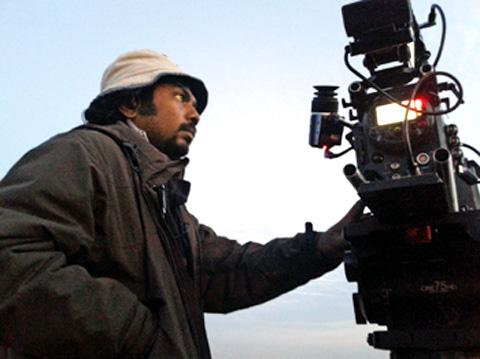
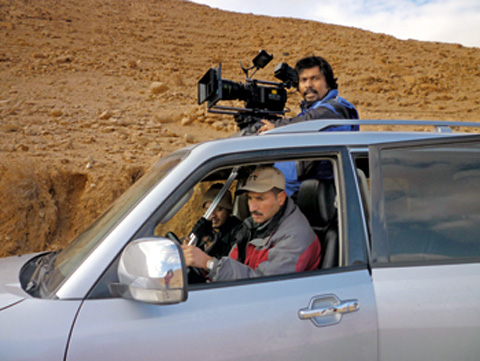
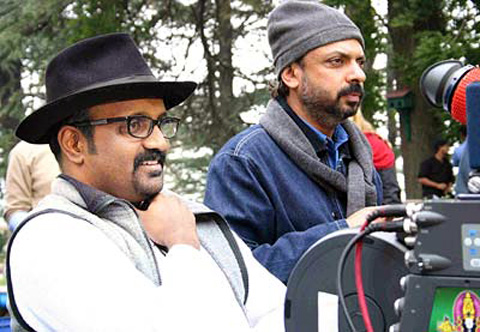

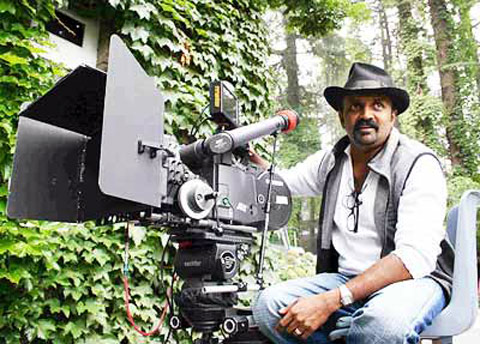
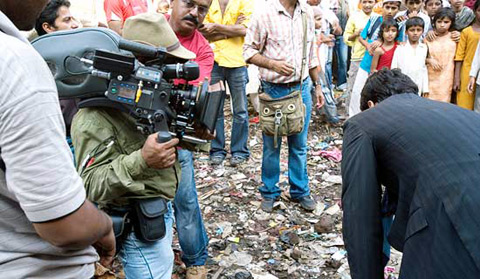
Comment
article